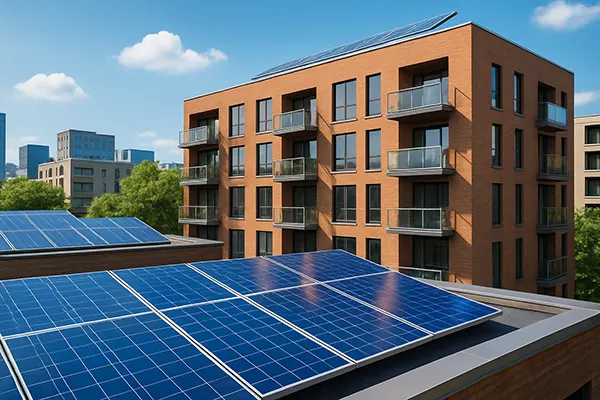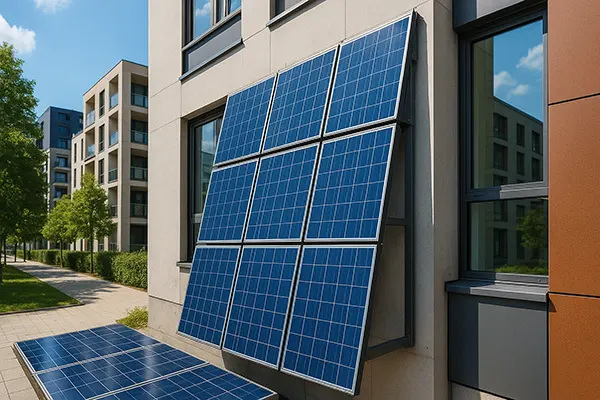Solar Revolution 2.0: Perovskite Panels and Urban Energy Independence

As the world pivots towards clean and decentralised energy, perovskite solar panels emerge as a transformative solution for modern cities. This new generation of photovoltaic technology offers a feasible pathway to achieving true energy autonomy in urban housing, reducing dependency on the grid and fossil fuels.
Technological Breakthrough: What Makes Perovskite Panels So Promising?
Perovskite solar cells have gained global attention due to their exceptional efficiency, flexibility, and low production cost. Unlike traditional silicon-based cells, perovskites can be manufactured using simpler processes and deposited on lightweight substrates. Their theoretical efficiency exceeds 30%, and tandem configurations with silicon are already showing commercial promise.
One of the key innovations is their tunable bandgap, which enables the absorption of a broader range of sunlight. This results in higher conversion rates, especially under diffuse light—ideal for urban environments where buildings often create shaded areas.
Additionally, perovskite technology supports roll-to-roll production methods, potentially enabling mass deployment on rooftops, windows, and even curved surfaces. These features pave the way for integrating energy generation directly into the architecture of city buildings.
Environmental and Economic Advantages
Besides technological advantages, perovskite panels are environmentally beneficial. They use fewer rare earth materials and require less energy to manufacture compared to silicon modules. This contributes to a smaller carbon footprint over the product lifecycle.
From an economic perspective, the cost-per-watt for perovskite cells is decreasing rapidly. Pilot projects in Europe and Asia already demonstrate competitive pricing, making this technology accessible not only for commercial but also residential use.
Urban homeowners can expect significant reductions in energy bills and maintenance costs. Moreover, decentralised production shields them from energy market volatility and blackouts.
Implementation in Urban Housing: The Path to Energy Independence
With the density of buildings and limited roof space, cities have unique challenges when adopting solar technology. However, perovskite’s flexibility unlocks new possibilities: from vertical façades to transparent solar windows. These features allow buildings to become energy producers without changing their structural aesthetics.
In Europe, initiatives in Amsterdam and Vienna are piloting perovskite-integrated housing blocks. Residents in these pilot areas are already experiencing increased energy autonomy—covering up to 80% of their daily electricity needs through rooftop and wall-mounted panels.
Municipal policies increasingly support such innovation. Incentives, subsidies, and green certifications for buildings with solar integration create a favourable ecosystem for wide-scale adoption. The trend is set to accelerate as energy regulations tighten across the EU.
Smart Grids and Home Energy Management
For maximum efficiency, perovskite-powered buildings must be connected to smart grid systems. These grids allow buildings to store, distribute, or even sell excess energy to the community. In cities like Barcelona, smart energy management solutions are already being bundled with solar installations.
Innovative battery systems—often paired with AI-driven optimisation tools—ensure energy is consumed at peak efficiency. For instance, stored solar power can be used during night-time or peak tariff hours, maximising both autonomy and savings.
Residents also gain access to real-time data on energy usage, enabling better consumption habits and more sustainable living practices. Thus, perovskite panels do not merely generate electricity—they empower responsible energy citizenship.

Challenges and the Road Ahead
Despite promising advantages, several challenges remain. Perovskite materials are sensitive to moisture and UV exposure, which affects their stability and long-term durability. Researchers are actively developing encapsulation methods to extend lifespan and improve reliability under real-world conditions.
Regulatory hurdles also pose an issue. Many national building codes still favour traditional silicon installations. Standardisation, certification, and performance benchmarking are critical steps needed to scale deployment safely and effectively.
Furthermore, the technology’s reputation still lags behind more established solutions. Increasing public awareness and trust will be vital, particularly for residential sectors where the risk tolerance is generally lower.
Outlook: What to Expect by 2030
By 2030, perovskite panels are expected to become a mainstream part of urban energy solutions. Ongoing investments in R&D, manufacturing scalability, and smart integration systems will drive this evolution. Hybrid tandem modules will likely dominate the premium segment, while fully perovskite-based products will lead in cost-sensitive markets.
Urban buildings will play a dual role: not just consumers but contributors to national energy supply. The shift from passive infrastructure to active energy generators marks a fundamental change in how we power our cities.
With global demand for sustainable energy rising, perovskite technology offers a compelling route toward smarter, cleaner, and more autonomous urban living. The revolution is no longer a vision—it’s underway.





